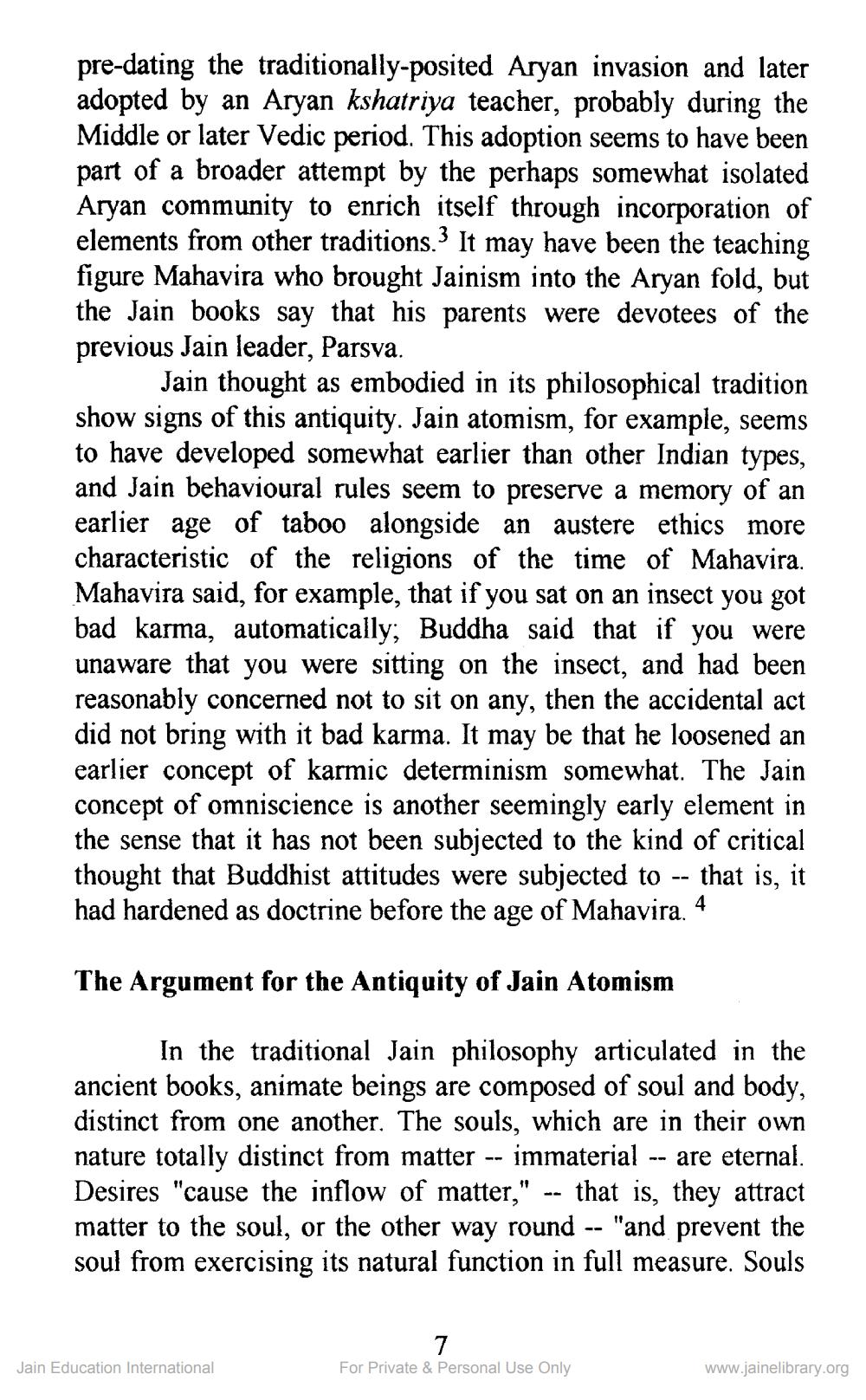________________
pre-dating the traditionally-posited Aryan invasion and later adopted by an Aryan kshatriya teacher, probably during the Middle or later Vedic period. This adoption seems to have been part of a broader attempt by the perhaps somewhat isolated Aryan community to enrich itself through incorporation of elements from other traditions.3 It may have been the teaching figure Mahavira who brought Jainism into the Aryan fold, but the Jain books say that his parents were devotees of the previous Jain leader, Parsva.
Jain thought as embodied in its philosophical tradition show signs of this antiquity. Jain atomism, for example, seems to have developed somewhat earlier than other Indian types, and Jain behavioural rules seem to preserve a memory of an earlier age of taboo alongside an austere ethics more characteristic of the religions of the time of Mahavira. Mahavira said, for example, that if you sat on an insect you got bad karma, automatically, Buddha said that if you were unaware that you were sitting on the insect, and had been reasonably concerned not to sit on any, then the accidental act did not bring with it bad karma. It may be that he loosened an earlier concept of karmic determinism somewhat. The Jain concept of omniscience is another seemingly early element in the sense that it has not been subjected to the kind of critical thought that Buddhist attitudes were subjected to that is, it had hardened as doctrine before the age of Mahavira.
4
The Argument for the Antiquity of Jain Atomism
In the traditional Jain philosophy articulated in the ancient books, animate beings are composed of soul and body, distinct from one another. The souls, which are in their own nature totally distinct from matter - immaterial are eternal. Desires "cause the inflow of matter," that is, they attract matter to the soul, or the other way round soul from exercising its natural function in full measure. Souls
"and prevent the
Jain Education International
--
7
For Private & Personal Use Only
--
--
www.jainelibrary.org




